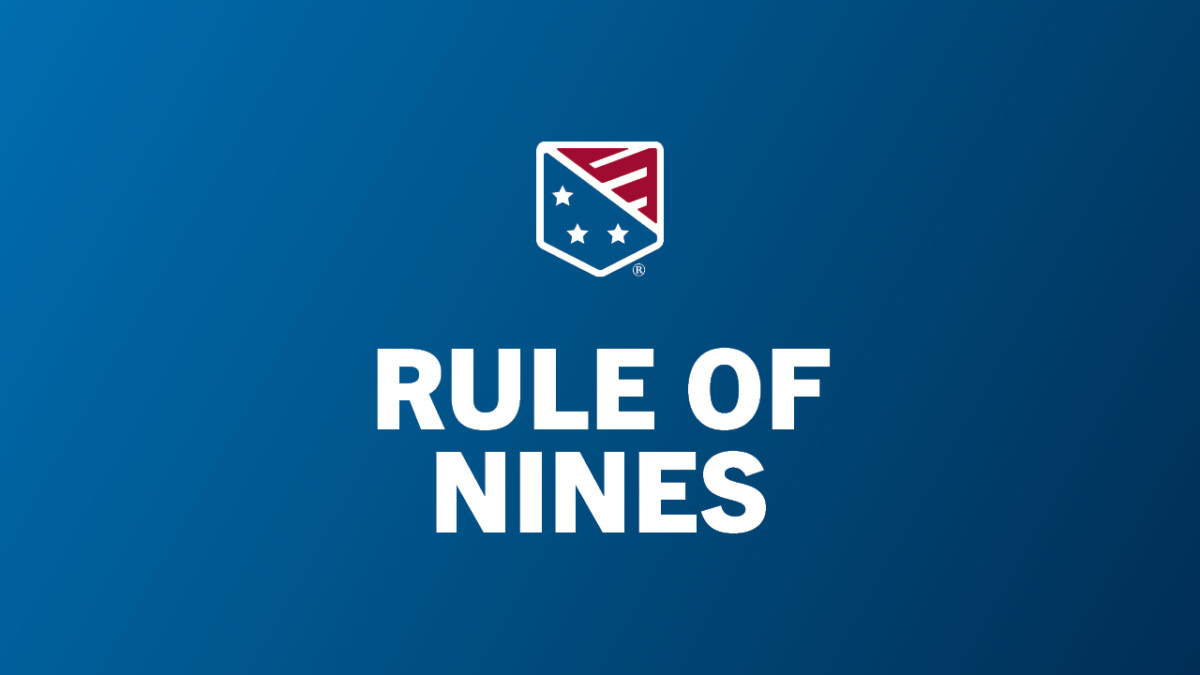The rule of nines is a method used to estimate TBSA, inform fluid resuscitation and initiate the patient transfer process. For patient safety, the rule of nines should only be calculated by healthcare professionals.
For Burn and Reconstructive Centers of America (BRCA), burn centers across our care system, emergency services personnel and many other facilities, the rule of nines is the foundation of emergency and pre-burn center care. The rule of nines is a method used to estimate Total Body Surface Area (TBSA), or the percentage of the body surface burned. Healthcare professionals typically use the rule of nines upon patient intake before starting fluid resuscitation.
Upon intake of a new burn patient, healthcare professionals will assess the patient for severe trauma that needs to be addressed before the burns and stabilize the patient. If there are no other traumatic injuries that need to be prioritized, then the burn care team will begin to treat the burn injuries. One of the first steps in emergency burn care is using the rule of nines to estimate the TBSA. The rule of nines is not used for every burn patient. It is typically used for calculating the most severe burn injuries, such as second-, third- and fourth-degree burns. First-degree burns are considered minor burns and generally don’t require medical attention, hospital transfer or fluid resuscitation.
When calculating the TBSA, the burn team or emergency services will use the rule of nines body chart as a guide. This chart shows the percentage of each body part, front and back. Each part of the body is broken up into increments of 9%, hence the rule of nines. For example, each adult arm counts as 4.5% for the front and 4.5% for the back, accounting for 9% for each arm out of a total of 100% of the entire body. Each adult leg counts as 9% for the front and 9% for the back, totaling 18% for the whole of each leg, and so on. When the burns are spread out, or there are burned patches here and there, it is common practice to use the size of the patient’s palm to calculate those areas with the palm counting as 1%.
The adult rule of nines is broken down as follows:
- Head (including neck): 4.5% anterior (front) and 4.5% posterior (back) for a total of 9%
- Each arm (including the hands): 4.5% anterior and 4.5% posterior for a total of 9% each
- Torso: 9% anterior and 9% posterior for a total of 18%
- Pelvis: 9% anterior and 9% posterior for a total of 18%
- Genitalia: 1% anterior
- Each leg (including feet): 9% anterior and 9% posterior for a total of 18% each
However, the adult rule of nines is not recommended for treating minors. For those pediatric patients, the rule of nines is adjusted for the proportional differences in the head, torso and legs.
The rule of nines for pediatric patients is broken down as follows:
- Head (including neck): 9% anterior and 9% posterior for a total of 18%
- Each arm (including the hands): 4.5% anterior and 4.5% posterior for a total of 9% each
- Torso: 18% anterior and 18% posterior for a total of 36%
- Each leg (including the feet): 7% anterior and 7% posterior for a total of 14% each
It’s important to note the distinctions between the adult and pediatric rule of nines. There are two main differences for children zero to nine years of age:
- A child’s head is proportionally larger at birth and accounts for 18% of its body area. For each year over one year old, 1% should be subtracted from the head up to nine years old. The head of children ages ten and up should be calculated at 9%.
- At the same time, 0.5% should be added to each leg for each year up to nine years old.
Once the TBSA has been calculated, the burn care team begins life-saving fluid resuscitation. Fluid resuscitation involves replacing or replenishing the body’s fluids lost during the burn injury using the preferred Lactated Ringers (LR) solution or Normal Saline if LR is not available. Fluid resuscitation aims to maintain blood circulation (perfusion) and organ function while avoiding inadequate or excessive fluid replacement. Proper fluid resuscitation is dependent on the accurate calculation of the patient’s TBSA. It’s crucial to accurately dose fluid, as an overloaded patient often experiences increased mortality and morbidity rates. Note, however, that not all burn patients need to be resuscitated. Burns under 10% TBSA do not require fluid resuscitation.
Using the rule of nines to estimate TBSA not only helps calculate proper fluid resuscitation but also sets the amount of intravenous (IV) access a burn patient needs (15% or more = at least one and 40% or more = at least two) and whether the patient needs to be transferred. The American Burn Association has established ten criteria for transferring a burn-injured patient for treatment. One of those ten criteria includes transferring those with partial-thickness burns with a ≥10% TBSA.
Further Information
The move towards specialized burn care has enabled burn centers like those in BRCA’s system to research, implement and improve early resuscitation practices to avoid over-aggressive fluid treatment. If you have any doubts, please call a member of our burn team at 855-863-9595 or use our Burn App for quick provider-to-provider consultations. BRCA’s burn experts have treated tens of thousands of burn patients. They are available 24/7 to assist in ensuring the accuracy of fluid calculation and the general need for fluids.
More burn care resources for medical professionals can be found at burncenters.com or by clicking here.
